Why “What If?” Should Be Every Writer’s Favorite Question
As creators who take great pride in their craft, all artists constantly need to address questions about their work, and writers are no exception. “What should I write about?” “Who is my target audience?” “How can I make this particular plot work?” At every turn, we need to be aware of potential issues and solutions so that we can produce pieces of the highest possible quality. True, this isn’t always fun; some questions seem to limit our work, while others seem to pull the brakes on it altogether. Yet there is one question that every writer should ask but that many likely take for granted: the infamous “What if?”
Why ask “What if?”

From Calvin and Hobbes, by Bill Watterson
I have memories from my childhood of my mom getting annoyed by my sister constantly asking “What if this?” or “What if that?” But while all the question ever did in her case was stress everyone out, I later came to realize how useful it could be for my fiction. We discouraged my sister from asking “what if” certain things were to happen in our real lives, and with good reason: it’s a terrifying question! But when I asked the same of my characters’ imaginary lives, countless possibilities emerged.
“What if something unexpected were to happen right here?” Then the characters could react in a way that would help establish important development points. “What if this character were to say something to that one?” Then the latter’s response could serve as a Chekhov’s Gun, concealing a clue that could become important later on in the story. “What if they were to go through the forest instead of around it?” Then they could run into a different set of obstacles that might make the story more interesting. You never know what sorts of ideas will pop up until you dare to search for them!
The Start of Something New
“What if?” isn’t limited to stories that are already in progress. Sometimes asking the question can be the beginning of a new work altogether. For example, this was the case of one of my most popular stories: a video game fanfiction I wrote when I was 19, titled Generation Beta. The idea for this story came to me one day when I asked myself, “What if my favorite video game characters were to have a future in which they got married and had children?” That started me thinking about said children: what they would look like, what their names would be, how their personalities would develop as they grew older, etc. The next thing I knew, I had created an entire cast of second-generation characters and a handful of potential plots, so I decided to take my brainstorming a step further and write a whole story around them, which I eventually published online. To this day, Generation Beta remains my most read work of fiction, drawing in hundreds of views every month, and it’s all thanks to one simple question I asked in a moment of idle thinking.
If you’re looking for your next big idea, don’t underestimate the power of “What if?” One of your simplest answers to the question may just be the key to a successful new story!
No Obligations, No Worries
The great advantage of the question “What if?” is that it doesn’t tie you to one specific idea, because all you’re really doing is brainstorming without actually committing to anything yet. If a particular line of thought doesn’t feel right, you can discard it as if it never existed – which it technically didn’t anyway – and just go straight back to where you started to try a different path instead. By repeating this process, you can run with as many ideas as you like until you finally find the one that clicks. Handy, right?
So the next time you feel stuck, take a break and ask yourself “What if?” You never know where your trains of thought will take you, but you can be sure it’ll be well worth the ride! Good luck!
Writer’s Toolkit: Index Cards
I’ve already used my Writer’s Toolkit segment to talk about the advantages of keeping a journal and a pocket notebook. Now to complete the trio of handy note-taking tools, today’s topic covers a utility that every prolific writer (especially novelists) should have under their belt: index cards.
There probably isn’t much else I can add about the usefulness of index cards that hasn’t already been covered by the journal and the pocket notebook, so instead I’ll briefly cover the advantages they have over both of these. Like the aforementioned items, index cards are great for taking notes, and while they aren’t quite as convenient to carry around as a pocket-size book, they do have a significant feature that makes up for that: separability.
Notebooks are useful for keeping track of ideas as they come to you; the challenge is sorting through those ideas later. Cutting up pages and sticking pieces together doesn’t seem like a very productive way to go about it (unless you’re into scrapbooking, in which case it may actually be fun). A good alternative, therefore, is to scan through the highlights and note those on separate cards. You can categorize your ideas by topic and sort through them anytime to find the most relevant ones for your current project. Essentially, notebooks are for taking with you to jot down ideas on the go, while index cards are for organizing those ideas in your private workspace. How convenient is that?
While every writer can benefit from using index cards this way, novelists get the most use out of them with an additional purpose. If you’ve ever owned a cork board, you may already be familiar with the concept of pinning notes and pictures in an orderly fashion (if you’re like me, though, they’re probably all pinned haphazardly with no discernible pattern whatsoever). In a similar manner, writers planning out a novel can pin index cards to keep track of character profiles, settings and important plot points, so as to get a clear vision of the story as a whole. For writers who are total scatterbrains, this is an excellent habit to pick up!
Summary
Advantages of Using Index Cards
- Easy to sort ideas
- Categorize topics for quick reference
- Keep track of important plot details
- Visualize novel storyline
Index cards are a great option for many writers, but almost a necessity for novelists. Whether you like to set aside the occasional note for future reference or lay out the entire detailed storyline of an upcoming novel, index cards are a useful tool to help you keep your creativity in order!
The Stories That Changed My Life (Writers Reveal)
Time for July’s round of Writer’s Reveal! Once again, it was my turn to suggest the topic of the month, so the prompt I chose this time was: “the story that changed my life”. Hope you enjoy the topic, and be sure to check out everyone else’s take on this subject. Enjoy!
Five Stories That Changed My Life
 I chose this topic because I thought it would be interesting to see how everyone would interpret it. What exactly constitutes a life-changing story? Is it one that took your life in a different direction than it would otherwise have gone? Is it one that motivated you to pursue your dreams? Is it one that made you look at the world differently? There are many ways to define life-changing stories, and I consider mine to be the ones that inspired me to become the writer I am today.
I chose this topic because I thought it would be interesting to see how everyone would interpret it. What exactly constitutes a life-changing story? Is it one that took your life in a different direction than it would otherwise have gone? Is it one that motivated you to pursue your dreams? Is it one that made you look at the world differently? There are many ways to define life-changing stories, and I consider mine to be the ones that inspired me to become the writer I am today.
Now I know the prompt I sent refers to a single story, but when I thought about it, I realized how difficult it would be to choose just one. There are many stories that have played a role in helping me grow as a writer, and I can honestly say that my life would likely have gone a different way were it not for every one of them. So to summarize my journey as a writer and as a person, here are five of the stories that changed my life:
1) The Cat in the Hat – Maybe two years old is too young for anything to be life-changing yet, but reading The Cat in the Hat with my mom is one of the first memories I have of enjoying a good book. Dr. Seuss’s stories sparked my love of reading at an early age, and that was the all-important first step into my passion for creative writing.
2) Charlie and the Chocolate Factory – I’ve loved reading since I was little, but Charlie and the Chocolate Factory was the story that first motivated me to become a writer. Roald Dahl’s colorful worlds and fantastic adventures inspired my imagination, and thanks to his books, I’ve known since I was nine years old that creating stories of my own is what I want to do for the rest of my life.
3) Harry Potter – Wanting to write stories wasn’t enough to make me a writer yet; I had to know how to do it well. J.K. Rowling’s Harry Potter series taught me dozens of excellent storytelling techniques such as character development, plot construction and conservation of detail. These novels are also the reason I decided at age 11 to focus on writing in the fantasy genre.
4) The Mists of Avalon – I first read Marion Zimmer Bradley’s Arthurian fantasy saga at the age of 14, which was a critical point in my personal development. The Mists of Avalon was the series that introduced me to adult themes such as religious fanaticism, political radicalism and feminism, and it did so in a way that made me feel empowered as a woman. These books are what inspired me to create strong female characters, a practice I still keep to today.
5) My parents’ story – This last one isn’t a novel, though I strongly believe it should be. The most inspiring story I’ve ever heard didn’t come from a book, but from my own parents. The story of their relationship is one that has inspired me my whole life, and the best part is that it’s still being written! My parents are the reason I believe in true love, and why I’ve always enjoyed reading and writing romance. It’s not a novel, but it’s still my all-time favorite story!
These are the stories that I believe have changed my life. They may seem simple or insignificant to most, but if they played even the tiniest part in my growth as a writer and a person, then they definitely changed me for the better.
What about you? What are the stories that changed your life?
This has been a special topic post for Writers Reveal, a monthly blog swap among several talented writers. Be sure to check out the other blogs participating in the event. Thanks for reading!
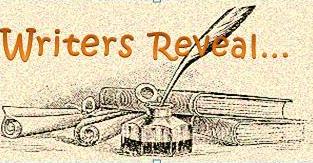
Other bloggers in Writers Reveal
Melissa Khalinsky: Melissa Writes
Becky Fyfe: Imagine! Create! Write!
Ashley Howland: Ghostnapped
Emily Hawker: You Learn Something New Every Day
We’re looking for more bloggers to join our circle! If you’re interested in participating in this monthly roundup, be sure to contact Emily Hawker so she can include you in our email list. Thank you!
Why I Write
So recently, I was tagged in a Why I Write chain by Emily Hawker, one of the bloggers in our Writers Reveal circle. Now I have to answer a handful of questions on – you guessed it – why I write. Sounds simple enough. Thanks for tagging me, Emily! Here goes nothing!
Why do I write?
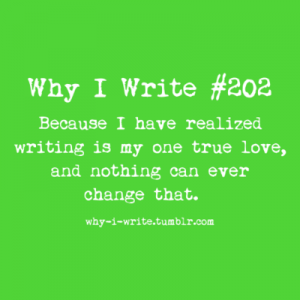 I’ve already covered this question pretty thoroughly in one of my very first blog posts. There are several reasons I write, but they all trace back to one major point. In a nutshell, I write because writing makes me happy. It’s my calling, the air I breathe, the practice that gives my life purpose. It’s the one thing I feel with every last fiber of my being that I was meant to do. I’m not a writer because I write; I write because I am a writer.
I’ve already covered this question pretty thoroughly in one of my very first blog posts. There are several reasons I write, but they all trace back to one major point. In a nutshell, I write because writing makes me happy. It’s my calling, the air I breathe, the practice that gives my life purpose. It’s the one thing I feel with every last fiber of my being that I was meant to do. I’m not a writer because I write; I write because I am a writer.
What am I working on?
Right now, I’m mostly working on this blog and, if they count, academic papers for grad school. I also have plans to compile some short stories for self-publication, as well as devote more time to those sci-fi/fantasy novels that have been bouncing around in my mind for a few years now.
How does my writing differ from others in my genre?
To answer this question, I’d first need to identify my “genre”. Generally speaking, though, I prefer to write stories based on the tons of research I like do on subjects that interest me. In fantasy, much of my writing has roots in ancient mythology, as I mostly write magical creatures based on the mythical beasts I used to read about all the time as a kid. In science fiction, I like to write based on the real scientific subjects I’ve studied in college as a Biology major. And in romance, most of the love relationships I write about start out as friendships, because I’ve learned from my parents’ relationship and personal experience that love based on friendship is the best kind of love. All these practices may not make my writing better than that of other writers, but they certainly make it mine!
Why do I write what I do?
I like to try my hand at as many different styles and genres as I can, but I do have my favorites. I write fantasy and science fiction because they’re a great escape from the confines of reality. I write romance because one of my favorite themes in fiction and in real life is love, and I enjoy expressing my idealistic views on the subject through storytelling. And I write poetry because it’s an excellent emotional outlet.
How does my writing process work?
I don’t really have a set process when it comes to writing, but I suppose it consists of a lot of daydreaming. For most of my work, ideas usually come to me during my idle thinking, and the ones I like best get written down and eventually become the flash fiction stories and poems I share online. As for longer works such as short stories and novels, I spend a significant amount of time planning them in my head before I even write the first word. I focus on telling a good story during the writing stage, and I put equal effort into editing so as to satisfy my high standards for technique. In the end, what I’m (hopefully) left with are stories that I can be proud to present to the world. Though my processes differ from each other, what all my works have in common is that I pour my heart and soul into every word I write. Writing is my ultimate passion, and I wouldn’t have it any other way!
Passing the Torch
Now I’m supposed to tag three people to answer the same questions on why they write. For this chain, I choose Vanessa Levin-Pompetzki, Beth Teliho and Inion N. Mathair (which technically makes four people, but two of them write for the same blog!). Can’t wait to read about why you all write! Good luck, ladies!
Follow That Fish: How to Drop Red Herrings in Your Stories
Some time ago, I wrote a blog post about a trope known as Chekhov’s Gun, a literary device in which a seemingly unimportant detail later becomes significant to the plot. But what if you want to achieve the opposite effect, that is, introduce a supposedly important detail that later turns out to have little or nothing to do with the main story? Today’s post features a sister trope that’s equally useful and just as fun to write. Do you enjoy misleading your readers with deceptive clues? Then let me introduce you to the next handy tool in your arsenal: the Red Herring.
Herring? Where?

The “red herring” is a type of heavily cured/smoked kipper. The idiom may have originated from anecdotes relating its use as a tool for misleading hunting dogs.
(CC Image by misocrazy via Flickr)
The Red Herring is a common device in fiction, employed by writers who like to keep readers on their toes. Simply put, it’s a clue intended to lead in the wrong direction. This is an especially useful trope for plots that involve a lot of mystery, as misleading details help to keep the element of surprise. After all, a story in which the major secret is easy to deduce from the beginning isn’t really worth the read, is it?
Like the Chekhov’s Gun, a Red Herring generally relies on the principle of conservation of detail to work properly: every detail presented in a story must have a reason for being there, otherwise it should be discarded. Of course, as mentioned above, a Red Herring functions in the opposite manner as a Chekhov’s Gun in that it’s intended to seem important upon its introduction but is later revealed to have been a distraction from the true secret of the story. The challenge for the audience is trying to tell the fake clues from the real ones!
Placing a Red Herring
Although every Red Herring is purposely used to throw the audience off, the best ones still have some significant connection to the plot even after being revealed as false leads. For instance, a clue can be introduced to set up suspicions about a certain character. This character may later turn out to be innocent, but the clue that seemed to be pointing to them justifies another character as the culprit instead. The example provided on TV Tropes is that of suspects in a hypothetical murder case, but I suppose it could apply to any kind of mystery. The only limit is your own imagination!
For writers who like to get really creative, Red Herrings come in different “flavors”. Subtropes include the Red Herring Shirt, when someone in the background turns out to be an important character; the Red Herring Mole, when a character who seems suspicious turns out to be innocent; and the Red Herring Twist, when a detail played as a potential Chekhov’s Gun turns out to be nothing more than a distraction from the main plot. It’s also possible to create a similar effect with a mistake as opposed to intentional misdirection, while a plot twist confused for a Red Herring due to its overly obvious nature is known as an Untwist.
Overall, I find Red Herrings very enjoyable to write, for when placed well, they can definitely add some interesting twists to a story. Have fun trying them out for yourself, and good luck throwing your readers off with misleading clues!
Why Grandparents Make Excellent Storytellers
Today I’d like to pay tribute to two wonderful people who are very special to me. They have loved and supported me my entire life, and I’m so grateful for everything they’ve done for me. So to honor them both, here’s my take on why grandparents can be such great sources of stories and creative inspiration. Happy Birthday, Grandma and Grandpa! I love you both so much!
Why Grandparents Make the Best Storytellers
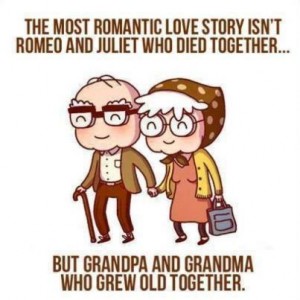 1) They literally have a lifetime of experience to share. A key ingredient to good storytelling is experience. That’s why when writers haven’t been through certain situations firsthand, they research accounts from people who have. Fortunately, some of us are lucky enough to have excellent sources right in our own families, and those are usually the people who have been through the most in life. Grandparents have decades of experience to share, and that adds up to a lifetime of interesting stories (to cite examples from my family, my maternal grandmother was a ballet dancer and my late paternal grandfather was a WWII veteran). You may have a goldmine of creative ideas among your own relatives, so why wouldn’t you want to take advantage of that?
1) They literally have a lifetime of experience to share. A key ingredient to good storytelling is experience. That’s why when writers haven’t been through certain situations firsthand, they research accounts from people who have. Fortunately, some of us are lucky enough to have excellent sources right in our own families, and those are usually the people who have been through the most in life. Grandparents have decades of experience to share, and that adds up to a lifetime of interesting stories (to cite examples from my family, my maternal grandmother was a ballet dancer and my late paternal grandfather was a WWII veteran). You may have a goldmine of creative ideas among your own relatives, so why wouldn’t you want to take advantage of that?
2) They’re living witnesses to how quickly times change. “When I was your age” seems to be a favorite phrase of many elders, and while young people have a tendency to take it for granted, it’s definitely one of those sentence starters that shouldn’t be ignored. History has never changed at such an accelerated pace as it has in the last couple of centuries, to the point where there are references that only people who grew up in a specific decade will understand (I myself am one of the “’90s kids”). That’s why the longer someone has lived, the more they can testify to how quickly times change. So once in a while, stop and listen to what your grandparents have to say about how the world was when they were young. You’re bound to learn about realities you never even imagined!
3) Their stories come with valuable advice. The best stories are those with lessons that can be applied to real life, and grandparents are full of wisdom just waiting to be imparted. Even if they aren’t applicable to your writing, you’re still likely to find a good moral or two by which to live your life. On top of enlightening you about the past, your grandparents can also teach you how to make the most of your future!
4) They’re comfortable with their audience. Isn’t it wonderful when a storyteller is so close with their audience that there are no inhibitions when it comes to sharing a tale? This seems to happen most frequently among family members. Elders often seem eager to pass their knowledge on to younger generations, and anyone patient enough to listen will likely find that this makes for some pretty good storytelling. Grandchildren, remember: if nothing else, you can always appreciate the joy your grandparents feel when telling you their stories!
5) They tell their stories with love! If there’s one thing grandparents have plenty to give, it’s unconditional love! All the stories and wisdom they share with their grandchildren are told with good intentions; they want their loved ones to learn as much as possible about life and to succeed in the world. You should always respect your elders, but especially your grandparents. If they enjoy talking to you and spend hours telling you stories, it’s because they love you!
Are your grandparents still around? Do (or did) you enjoy listening to their stories? What have you learned from them?
When Life Gives A Writer Lemons (Writers Reveal)
Hello, and welcome to the June round of Writers Reveal! This month’s topic was sent to us by Melissa of Melissa Writes. Her topic for us is: “When life gives you lemons… how do you keep on writing?” Challenge accepted! Thanks for the prompt, Melissa!
What to do when life tries to give you lemons?
Everyone knows that famous saying: “When life gives you lemons, make lemonade.” We also understand what it means: instead of getting discouraged about life’s challenges (the proverbial lemons), one should strive to turn them into positive experiences (the proverbial lemonade). So we take that advice to heart and try our best to live with optimism, because we know deep down that life is best experienced with sweet refreshing lemonade as opposed to a pile of yucky sour lemons.
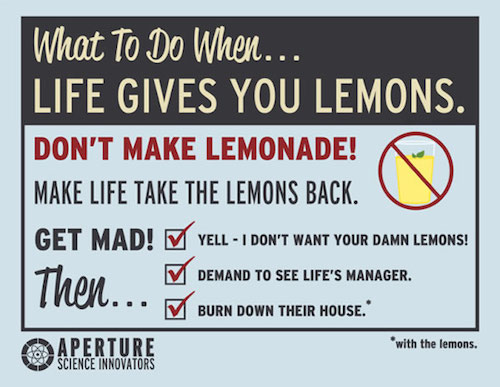 This is what “normal” people do. But not writers. We do very different things with the lemons life gives us. Not always, but often. Why? Because sour or sweet, they pose equal safety and risk to our writing. Yes, pure lemonade is great, but while it’s beneficial to real life experience, time spent making it is time taken away from the art that in many cases thrives on the lemons as well.
This is what “normal” people do. But not writers. We do very different things with the lemons life gives us. Not always, but often. Why? Because sour or sweet, they pose equal safety and risk to our writing. Yes, pure lemonade is great, but while it’s beneficial to real life experience, time spent making it is time taken away from the art that in many cases thrives on the lemons as well.
So what does my inner writer tell me to do when life tries to give me lemons? It depends on the situation, but she sometimes likes to take an alternative route to the traditional approach.
Throw the lemons back!
When life gives you lemons, don’t make lemonade. Make life take the lemons back! Get mad! I don’t want your damn lemons! What the hell am I supposed to do with these? Demand to see life’s manager! Make life rue the day it thought it could give Cave Johnson lemons! Do you know who I am? I’m the man who’s gonna burn your house down! With the lemons! I’m gonna get my engineers to invent a combustible lemon that burns your house down!
– Cave Johnson, Portal 2
OK, so I wouldn’t go as far as trying to invent combustible lemons, but sometimes when life drops too many obstacles at once into my course of writing, I just get frustrated. I wish I had the motivation to be optimistic all the time, to keep on creating the stories that so often themselves are the lemonade of my life. But the types of challenges I usually face actually keep me from making that lemonade and instead seem to push me into making some kind of lemon sorbet. And while I do come out of them a better person each time, how fulfilling can that truly be if they rob me of the time to put that new experience to the best use I know how?
So once in a while, when I’m tired of being bombarded with life’s lemons, I grab them and throw them back. I refuse to make anything out of those lemons. I try to forget they exist and just concentrate on writing about things completely unrelated to whatever I’m going through at the moment. Is that irresponsible? Maybe. Almost definitely, in fact. But that’s what I do. There are times when I need a break from life altogether, and more often than not, writing is just the thing to help me recharge so that when life decides to throw those lemons at me a second time, I’ll be ready to turn them into some darn good lemonade.
Make your own lemons! Whaaat?
Life isn’t really life without its fair share of challenges, but some of us are lucky enough to experience an opposite kind of existence, where lemonade is constantly handed to us free of charge and all we have to do is sit back and enjoy. I’m fortunate enough to live without major struggles that relentlessly test my inner strength and push me to a potential breaking point over and over again. I am one of the lucky ones. Life gives me more lemonade than lemons, and for that, I am grateful.
Having said that, this also poses a hazard to writing. Nobody wants to read stories where everyone is happy all the time and nothing bad ever happens, because those would be ridiculously boring. As much as they threaten our creative time, writers need lemons because they provide inspiration for the conflicts in our fiction. So what do I do when life won’t give me those lemons? I make my own.
I know it would be unwise to purposely create complications for myself (which I sometimes do anyway, but that’s beside the point). Life is going to hand out plenty of those on its own, so there’s no need to add to the burden if it can be avoided. Instead, I try to imagine challenges I’ve never personally faced… and then make my characters face them. Essentially, I play the part of life by giving out the lemons.
I’ve written stories about forbidden love, prejudice and senseless hatred. I’ve pitted characters against each other in action scenes fraught with violence. I’ve made them face all sorts of creatures from dragons to giant robots. I’ve subjected them to enough emotional stress to drive a real person close to a breakdown. But the best part of it all is making my characters take on all these challenges and overcome them. In a way, it’s reassuring to see them take all the lemons I give them and turn them into lemonade, because it’s as if my subconscious is telling me that if my own characters can make the best of an imaginary life, then I can certainly make the best of a real one.
When life gives me lemons, how do I keep on writing? Sometimes I don’t, but when I do, I do my best to turn those lemons into the most delicious lemonade ever.
What about you? What do you do with the lemons life gives you?
This has been a special topic post for Writers Reveal, a monthly blog swap among several talented writers. Be sure to check out the other blogs participating in the event. Thanks for reading!

Other bloggers in Writers Reveal
Melissa Khalinsky: Melissa Writes
Becky Fyfe: Imagine! Create! Write!
Ashley Howland: Ghostnapped
Emily Hawker: You Learn Something New Every Day
Writing with the “Fishes”: Three Plural Forms You Didn’t Know Are Correct
English is a complex language, as many of its non-native speakers are well aware. Among the several confusing aspects of its grammar is the issue of plural forms. While those who grew up speaking English tend to take them for granted, I know several people still learning the language who find it odd that “houses” can be infested with “mice” or that North America has “moose” and “geese”. Most unusual plural forms are common knowledge to us, but even native English speakers can be thrown off by some lesser known plural forms.
Just for fun, here are three plural forms that are uncommonly known to be correct. Enjoy, and be careful not to get them wrong!
1) Fishes
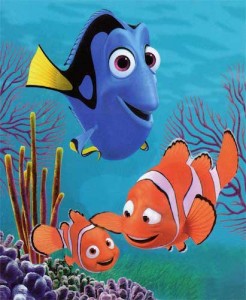
There are three fish in this picture, but only two fishes! (Finding Nemo, 2003)
This may be my favorite uncommon plural word because it’s one I see all the time in my field of study. As a Marine Biology student, I’m constantly reading papers and book chapters containing the keyword “fishes”, and I’d be lying if I said I didn’t feel smart for knowing why this plural form of “fish” is correct.
We were taught as children that the plural of “fish” is the same as its singular form, while fewer of us have been exposed to its other plural form in scientific contexts. But here’s the catch (no pun intended): “fishes” is used to indicate multiple kinds of fish (as in “Fishes of the Caribbean”), while “fish” is used to indicate multiple individual fish (note that “fishes” was once used in this sense too, but has since fallen into disuse).
So yes, you’ll probably still be using “fish” most of the time, but at least you now know why the famous phrase “sleeping with the fishes” isn’t entirely wrong!
2) Octopuses
I bet you’ve gone most of your life thinking that the plural form of “octopus” is “octopi”. Don’t worry; so have I. When I was a kid, I had a Math book titled “How Do Octopi Eat Pizza Pie?”, and ever since, I’d been walking around thinking more than one “octopus” should be called “octopi”. Turns out, until last month, I’d thought wrong.
Similar to the previous example, we were taught at a young age to follow a specific rule when creating the plural form of certain words, but without really understanding why. We just know that several words ending in -us are pluralized by replacing the last two letters with -i. However, this mostly applies to some words derived from Latin, such as “cactus” (which, despite being Greek in origin, counts as an example of botanical Latin). “Octopus”, on the other hand, is etymologically Greek, and thus does not obey this rule. This is why “cacti” is correct (though “cactuses” is also acceptable), while “octopi” is not. Instead, pluralize “octopus” as “octopuses” or “octopodes”, and if anyone ever tries to correct you, you’ll know how to explain why your way is correct!
3) Dwarfs
Fans of The Lord of the Rings and other fantasy stories by J.R.R. Tolkien may be overly familiar with the word “dwarves”. What many may not realize, though, is that this is actually a newer plural form of “dwarf” that was popularized by the author (though it seems to have originated elsewhere). The standard plural form is actually “dwarfs”, and is the correct spelling for most contexts. However, “dwarves” seems to have become increasingly acceptable in fantasy fiction to indicate multiple individuals of a race of little people, so it shouldn’t be disregarded completely. The important thing is to know the difference, especially if you write a lot in the fantasy genre. Whether you’re referring to “Snow White and the Seven Dwarfs” or the “elves” and “dwarves” of Middle-earth, make sure you know when to use which form!
What are your thoughts on these unusual plural forms? Any more you would add to this list?
Motivational Music: VOCALOID (Hatsune Miku, Megurine Luka, KAITO)
If you read my post about VOCALOID last week, you probably saw this coming. If you didn’t, I strongly recommend you take a quick look at that one in order to understand what I’m about to show you now. All caught up? Great, then let’s get started!
This may seem rather bizarre since my last Motivational Music post featured classical music, but I guess that just goes to show how diverse my musical taste really is, and more importantly, how many different styles can inspire my writing (and hopefully yours). Ready for a taste of music from Japan? Then allow me to dig just a little deeper into the aforementioned love of mine by sharing music that features the voices of my three favorite Vocaloids: Hatsune Miku, Megurine Luka and KAITO.
Hatsune Miku
Genre(s): Pop, Rock, Electronic
Origin: Tokyo, Japan (Fujita Saki, Miku’s voice provider)
Writing Inspiration: Humor, Drama, Romance
My Favorite Song(s): “World is Mine“, “Magnet” (duet with Megurine Luka), “Romeo and Cinderella“, “Rolling Girl“, “Tell Your World“, “Senbonzakura”
My Favorite Producer(s): ryo (Supercell), Hachi, kz (livetune), wowaka, Mitchie M
Popularly known as “everyone’s favorite digital diva”, Hatsune Miku has been a national celebrity in Japan for years and more recently seems to be making quite an impact in the Western world. She was designed to represent the future of music (reflected in her name, as “hatsu-ne-miku” means “first sound of the future”), and by now has likely been used to sing in every genre of music imaginable (and I mean every genre, from opera and Broadway to heavy metal and dubstep). I often think of Miku as the Jack-of-all-trades of the Vocaloids; she has a voice suited to all types of music, but she isn’t always the best choice of vocals for a given song (case in point, virtually every other popular Vocaloid has a cover song that’s arguably better than its corresponding Miku original: “A Single Red Leaf” as sung by Luka, “Electric Angel” as sung by Rin and Len, “Poetaster and Singing Dolls” as sung by Gakupo, “My True Self” as sung by Kaito and Meiko, etc.). That being said, the songs that are well-suited for her are awesome.
Because most of her popular songs are upbeat, I’ve found Miku to be great inspiration for cheerful themes and stories with happy endings. At the same time, she sings a variety of songs that make good inspiration for other types of writing, including romantic, melancholy, terrifying, and just plain bizarre. Even if all you need is motivation to create, Miku is very good at cheering her listeners on and making them feel special. The subject matter of her songs covers everything from the meaning of life to vegetable juice, so whatever you plan to write, chances are there’s a Hatsune Miku song out there that may inspire you!
For some awesome music featuring Miku’s vocals, I recommend looking up songs produced by ryo, Hachi, livetune, wowaka and Mitchie M. Of course, great Hatsune Miku songs are never in short supply, as evidenced by the fact that she dominates Nico Nico Douga’s Hall of Legend. What can I say? She’s clearly everyone’s favorite digital diva for a reason!
Megurine Luka
Genre(s): Ballad, Pop, Dance
Origin: Tokyo, Japan (Asakawa Yuu, Luka’s voice provider)
Writing Inspiration: Drama, Tragedy, Romance
My Favorite Song(s): “Witch Hunt“, “Toeto“, “Double Lariat“, “Circus Monster“, “Happy Synthesizer” (duet with GUMI)
My Favorite Producer(s): fatmanP, Yuyoyuppe, Suzuki-P, Circus-P
My other favorite female Vocaloid, Megurine Luka‘s most notable quality is her ability to sing in both Japanese and English (hence the name “meguri-ne”, which translates as “round sound”). Unlike Miku, Luka is best known within the VOCALOID fandom as a ballad singer for her low mature-sounding voice, and most producers famous for using her have her sing slow, sad songs. That isn’t to say she only excels in this genre, though; in fact, some of her biggest hits are the type of songs that make you want to get up and dance (would you believe me if I told you I know the whole choreography to this song?). Her soft soothing vocals also make her an excellent choice for songs with romantic themes, so she’s definitely a potential favorite of fans who enjoy those types of stories!
Luka has been great inspiration for some of my more dramatic writing, such as romance and tragedy. Some of her best ballads are written by fatmanP and Yuyoyuppe, while Circus-P is famous for writing original songs for her in English. Luka is a popular choice among various producers, though, so your best bet to find great music featuring her voice is to check out her music page on the VOCALOID wiki. She may not be as famous as Miku, but you’ll find that she too has a wide variety of great songs to enjoy!
KAITO
Genre(s): Folk, Electronic, Rock
Origin: Japan (Fuuga Naoto, Kaito’s voice provider)
Writing Inspiration: Romance, Humor, Poetry
My Favorite Song(s): “A Thousand-Year Solo“, “Tsugai Kogarashi” (duet with MEIKO), “Cantarella“, “What’s COLOR?“, “Crescent Moon”
My Favorite Producer(s): Shigotoshite-P, Shinjou-P, natsuP, Kurousa-P
Kaito (also known by his fan-given name Shion Kaito) is my favorite male Vocaloid. In a franchise that consists mostly of female voices, it’s refreshing to enjoy a lower register of vocals once in a while (plus a cute face to match, *wink*). Being one of only two Japanese voicebanks for the original VOCALOID engine (the other being Meiko), he is actually older than Miku and Luka (who were both released for VOCALOID2), but took considerably longer to become as popular. Due to his standing as a veteran Vocaloid, Kaito has a tendency to sound more “electronic” than his successors, but the best producers who use his voice know how to play this to their advantage. Because of this, many of Kaito’s best songs don’t try to hide the fact that he isn’t real, but instead use him to create a unique sound or theme that a human singer couldn’t pull off.
Most of the songs featuring Kaito at his best come in the form of traditional folk music or electronic tracks that showcase his original sound, though he’s also frequently used to sing rock (usually in the visual kei band VanaN’Ice with Kamui Gakupo and Kagamine Len). He’s also very good at singing duets with other Vocaloids; one of the biggest shipping wars I’ve ever come across in the fandom is about whether he makes a better couple with Miku (as in “Cendrillon“) or with Meiko (as in “A Pair of Wintry Winds“), and his cover of “Magnet” with Gakupo proves he has excellent chemistry with female and male Vocaloids alike. Since his V3 update, Kaito has become even more versatile, adding softer tones to his voice and even gaining the ability to sing in English, so good music sung by him isn’t likely to run out anytime soon!
Because of his range as a singer and a character, I find Kaito to be great inspiration for various types of writing, especially romance, humor and poetry. Most of my favorite songs featuring his voice were written by Shigotoshite-P (Japanese folk music), Shinjou-P (electronic) or natsuP (rock), so if you’re looking for some great Kaito songs, I highly recommend starting with music by any of these talented ladies. They really know how to make him shine!
Bonus: Want to hear a song performed by all three of these amazing Vocaloids? Try “ACUTE“; yes, it’s a tragic story about a love triangle, but the music is great!
I hope you’ve enjoyed learning about my three favorite Vocaloids, and that you have fun listening to the music I’ve shared with you! Thanks for reading/listening!
VOCALOID is a product of Yamaha. Hatsune Miku, Megurine Luka and KAITO belong to Crypton Future Media. All official artwork is displayed for illustrative purposes only. I own nothing!
VOCALOID: The Power of Creative Collaboration
Those familiar with my blog know that Wednesdays are dedicated to topics regarding creative writing. Today, I’m going to step a little outside the box (not too far, don’t worry) to share a little more of my nerdy side and talk about my newest obsession: VOCALOID. There’s a lot I could tell you about this newfound love of mine (enough to fill another series of posts, in fact), but the point of bringing it up now is simply to focus on what I consider the most interesting aspect of the fandom: creativity through collaboration. So just sit back and listen while I take you on a brief journey through this incredible musical world. Enjoy!
What is VOCALOID?
Before I answer this question, let me ask you one: have you ever heard of a Japanese singer named Hatsune Miku? If not, take a minute to listen to one of her most popular songs: “World is Mine“.
Pretty neat, huh? Now what if I told you that the singer in the video doesn’t actually exist, and what you just heard was nothing more than a computer program synthesizing a human voice? Here’s another video of her singing the same song, but this time in front of a live audience:
Yes, that’s a full house cheering for a hologram! Seriously, how cool is that?
 VOCALOID is a software from Yamaha designed to synthesize singing vocals, intended to serve as a substitute for real singers. Each package consists of a character name, a voicebank comprised of phonemes recorded by a real person, and (in most cases) a basic character design. Voice synthesizing is achieved by typing lyrics and melody into the program.
VOCALOID is a software from Yamaha designed to synthesize singing vocals, intended to serve as a substitute for real singers. Each package consists of a character name, a voicebank comprised of phonemes recorded by a real person, and (in most cases) a basic character design. Voice synthesizing is achieved by typing lyrics and melody into the program.

Hatsune Miku software for the VOCALOID2 engine
The Vocaloids started being released in 2004 with moderate commercial success, but the software exploded in popularity around 2007 when a Hatsune Miku cover of the Finnish folk song “Ievan Polkka” went viral on Nico Nico Douga (a Japanese video-sharing website similar to YouTube). Since then, VOCALOID has had a tremendous cultural impact, drawing fans from Japan and the Western world alike. To this day, Miku remains the most famous of the Vocaloids and NND plays an essential role in the collaborative creation and sharing of VOCALOID works.
Today, there are dozens of official Vocaloids available in at least six languages (mostly the original languages of Japanese and English), hundreds of fanmade voicebanks (known as UTAU), thousands of VOCALOID-related songs, and tons of derivative media ranging from video games to live concerts. There’s no doubt about it: VOCALOID is a global phenomenon.
Why is VOCALOID so popular?
Honestly, I’ve been asking myself the same question ever since I became a fan. I heard my first VOCALOID song (“World’s End Umbrella“) in 2010 through a reference from a friend, and YouTube must have remembered that because it gave me a recommendation for my second song (“Witch Hunt“) in mid-2013. The funny thing was, though I absolutely loved the latter, I had no clue yet what I was listening to. It was only in November 2013 that I really got into the fandom and started to learn more about the Vocaloids. Fast-forward half a year: I now have days’ worth of VOCALOID videos logged in my YouTube history and a playlist consisting of over 300 songs. Yeah.
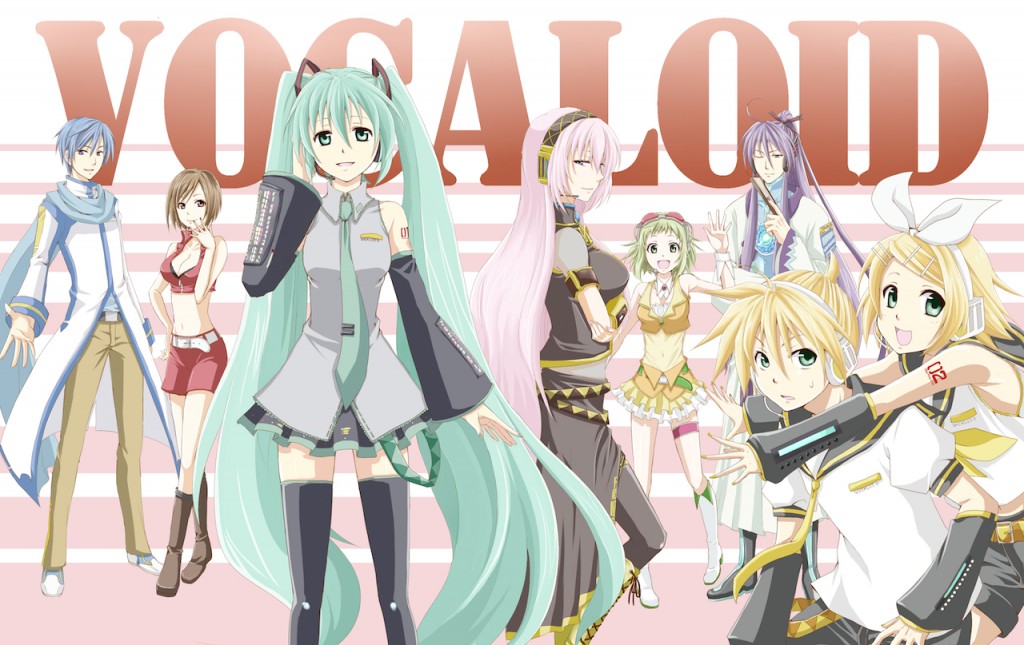
The eight most popular (and my favorite) Japanese Vocaloids. In order from left to right: KAITO, MEIKO, Hatsune Miku, Megurine Luka, GUMI, Kamui Gakupo, Kagamine Len and Kagamine Rin
(Source unknown; image found on Zerochan)
So what is it about this fandom that’s kept me and countless others hooked for so long? Is it the endless assortment of awesome music? Is it the variety of characters with unique voices and personalities? Or is it the originality of the whole idea? If I had to bet on it, I’d say it’s a combination of all three, plus something extra special.
My theory is that what keeps VOCALOID going strong is the amount of creativity it takes to sustain the fandom. What starts out as a “singer in a box” becomes a character in stories told through music, a subject of visual art and a virtual presence on the stage of a sold-out concert. But what makes all this truly amazing is that the entire fanbase is built on a foundation of collaborative effort. In other words, to keep the Vocaloids “alive”, their fans usually work together.
Creativity, Collaboration, Empowerment
If there’s one song that sums up what the VOCALOID fandom is all about, it’s probably “Existence Imagination“. This is the product of the collaboration of 13 people using nine Vocaloids. The song showcases them at their best individually, in pairs and as a chorus, and the lyrics are essentially the characters happily saying they will always be there to give their voices to the creativity of their beloved songwriters. It’s all-around awesome. Hear for yourself:
The success of a VOCALOID producer is generally measured by the popularity of their uploaded works on NND, and this often relies on more than just good music. Because of this, many of the best VOCALOID videos are born from the combined effort of at least two people. One of my favorite teams of producers consists of three people: Hitoshizuku-P (music and lyrics), Yama△ (mixing) and Suzunosuke (illustration). Pretty much every project to which all three of them contribute is gold. Here’s a great example, the first video in a popular series of theirs using the famous “Vocaloid Eight”: Bad∞End∞Night.
The fun thing about VOCALOID is how interactive it is, in that it leaves about 99% to the imagination. Absolutely nothing is canon, right down to whether or not the Kagamine twins are actually related. All the developers provide is a voice and a basic character design; everything else (personalities, relationships, etc.) is left entirely up to the fans. And this opens the door to a flood of creative ideas.
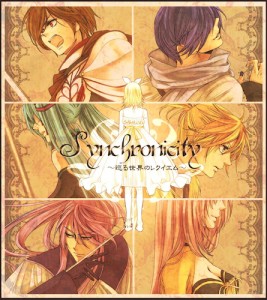
The Vocaloids as they appear in the Synchronicity trilogy (illustration by Suzunosuke)
Hatsune Miku has played every role from a self-aware artificial being to a shy girl in love to a powerful demigoddess. Megurine Luka is well known for singing in both Japanese and English, in tones ranging from low and soft to high and cute. Kagamine Rin and Len play siblings in some of their videos and lovers in others. Vocaloids sing solo, in duets, in trios and in groups. They’ve covered every genre and style of music: adorable, comedy, tragedy, horror, etc. In the spirit of creativity, producers even release off-vocal versions of their music to make it possible for others to cover the same songs using different Vocaloids (or their own voices). Their program has been around for ten years now. And the music just keeps coming.
So many possibilities have been constructed around the Vocaloids that it’s easy to forget they’re each nothing more than a voice and a drawing. Fans collectively build their personalities through music and visual art to create the characters we know and love, and I believe there’s a sense of empowerment to be found in that. The developers may have created the Vocaloids, but the fanbase brought them to life. I imagine that the real fun of attending a VOCALOID concert is knowing in the back of your mind that the lovable turquoise-haired girl smiling and waving from the stage only exists because you and everyone else around you helped make her real, and for those couple of hours, you feel special in the belief that she is singing to you. So in a way, even the fans who simply enjoy the music created by others are working together to keep the domain thriving.
Obviously, VOCALOID isn’t for everyone. Most people understandably prefer the voice of a real person to that of a machine, and many just don’t get the novelty of virtual singers. But where VOCALOID lacks in the reality department, it certainly makes up for in originality, creativity and inspiration. Sure, several fans of the Vocaloids claim to wish they were real, but honestly, I’m sure deep down we all love them for exactly what they are, and even more for what they give us. Producers and fans alike, everyone in the fandom is united by a mutual love of VOCALOID. And doesn’t that make it just as special as any other form of art?
Thank you for following me on this tour! I hope you’ve enjoyed learning about the Vocaloids and the power they have to inspire creative collaboration. As always, thanks for reading, and if you really enjoyed the music featured in this post, welcome to the wonderful world of VOCALOID!
VOCALOID, VOCALOID2 and VOCALOID3 engines belong to Yamaha Corporation. Hatsune Miku, Kagamine Rin/Len, Megurine Luka, KAITO and MEIKO belong to Crypton Future Media. Kamui Gakupo and GUMI belong to Internet Co., Ltd. All videos and artwork belong to their respective creators and are displayed for illustrative purposes only. I own nothing!

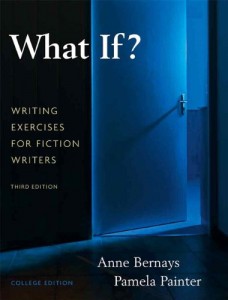




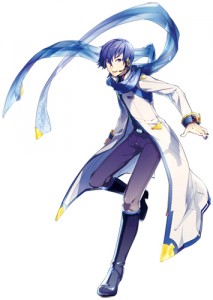

Recent Comments